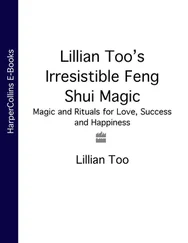Tan, Chade-Meng - Search Inside Yourself - The Unexpected Path to Achieving Success, Happiness (and World Peace)
Здесь есть возможность читать онлайн «Tan, Chade-Meng - Search Inside Yourself - The Unexpected Path to Achieving Success, Happiness (and World Peace)» — ознакомительный отрывок электронной книги совершенно бесплатно, а после прочтения отрывка купить полную версию. В некоторых случаях можно слушать аудио, скачать через торрент в формате fb2 и присутствует краткое содержание. Год выпуска: 2012, Издательство: Harper Collins, Inc., Жанр: Старинная литература, на английском языке. Описание произведения, (предисловие) а так же отзывы посетителей доступны на портале библиотеки ЛибКат.
- Название:Search Inside Yourself: The Unexpected Path to Achieving Success, Happiness (and World Peace)
- Автор:
- Издательство:Harper Collins, Inc.
- Жанр:
- Год:2012
- ISBN:нет данных
- Рейтинг книги:4 / 5. Голосов: 1
-
Избранное:Добавить в избранное
- Отзывы:
-
Ваша оценка:
- 80
- 1
- 2
- 3
- 4
- 5
Search Inside Yourself: The Unexpected Path to Achieving Success, Happiness (and World Peace): краткое содержание, описание и аннотация
Предлагаем к чтению аннотацию, описание, краткое содержание или предисловие (зависит от того, что написал сам автор книги «Search Inside Yourself: The Unexpected Path to Achieving Success, Happiness (and World Peace)»). Если вы не нашли необходимую информацию о книге — напишите в комментариях, мы постараемся отыскать её.
Search Inside Yourself: The Unexpected Path to Achieving Success, Happiness (and World Peace) — читать онлайн ознакомительный отрывок
Ниже представлен текст книги, разбитый по страницам. Система сохранения места последней прочитанной страницы, позволяет с удобством читать онлайн бесплатно книгу «Search Inside Yourself: The Unexpected Path to Achieving Success, Happiness (and World Peace)», без необходимости каждый раз заново искать на чём Вы остановились. Поставьте закладку, и сможете в любой момент перейти на страницу, на которой закончили чтение.
Интервал:
Закладка:
These two practices turn out to complement each other very well. Doing both practices every day is like making use of the full set of gears in your car: you can start the car moving smoothly and get a good speed.
More importantly, after a while, your formal meditation may be infused with a powerful quality known in Sanskrit as sukha . The most common translations for sukha are “bliss,” “ease,” and “happiness.” In my opinion, the best translation of sukha is its most technical translation: “non-energetic joy.” Sukha is a quality of joy not requiring energy. It is almost like white noise in the background, something that is always there but seldom noticed. There are two important implications of sukha’s non-energetic quality. The first is that it is highly sustainable because it does not require exertion of energy. The second is that because it does not require energy, it is so subtle that it takes a very quiet mind to access, like a soft background hum that is audible only when nobody in the room is talking loudly. What that means is you need to learn to quiet your mind to access sukha, but once you become skillful at doing that, you have a highly sustainable source of happiness that does not require sensual input. Talk about life changing.
Almost all seasoned meditators I know arrive at sukha at some point in their meditative careers. However, my own experience suggests that Joyful Mindfulness accelerates sukha in formal sitting. I theorize that practicing Joyful Mindfulness got my mind accustomed to ease, humor, and lightness, thus allowing it to connect with sukha more readily during formal practice. That sukha then quietly infuses my daily life and makes daily experiences a bit more joyful, thereby increasing the frequency and intensity of joyful experiences that I can use for Joyful Mindfulness practice. And thus, another happy, virtuous cycle is formed. Joyful Mindfulness works great by itself, but it becomes very powerful in combination with formal mindfulness practice.
Mastering Both Focused and Open Attention
There are two complementary qualities of physical fitness: strength and stamina. To be a well-rounded athlete, it is good to have both. Similarly, there are two complementary qualities of attention: focused attention and open attention. To be an accomplished meditator, it is good to be strong in both.
Focused attention is an intense focus on a chosen object. It is stable, strong, and unwavering. It is like sunlight focused with a lens shining intensely on a single point. It is like a solid piece of rock, majestically unmoved by the distraction of the wind. It is a mind like a closely guarded royal palace where only the most honored guests are allowed to enter and all others are courteously but firmly turned away.
Open attention is a quality of attention willing to meet any object that arrives at the mind or the senses. It is open, flexible, and inviting. It is like ambient sunlight, lending itself to anything and everything. It is like grass, always swaying gently in the wind. It is like water, willing to take on any shape at any time. It is a mind like an open house with a friendly host, where anybody who walks in is welcomed as an honored guest.
The good news is when you are doing mindfulness meditation, you are training both focused attention and open attention at the same time. (Two for the price of one!) That is because mindfulness meditation includes both components. There is the element of moment-to-moment attention that you keep bringing back, which trains focused attention. There is also the element of non-judging and letting go, which trains open attention. Hence, if you only do mindfulness meditation, you will be just fine.
Having said that, however, we found it very useful for our participants to experience the difference between them and to acquire the tools to emphasize training of one or the other if they so choose. The exercise we created is similar to circuit training that some athletes use. Circuit training is a combination of high-intensity cardio and resistance training in the same session. One common way to do it is for trainees to run around a track (cardio) and then stop to do push-ups (resistance), and then run around the track again, and then stop to do sit-ups (resistance), and so on. Trainees alternate between cardio and resistance training, hence developing both strength and stamina at the same time.
In the same way, our circuit training starts with a focused attention exercise for three minutes, and then we go to an open attention exercise for three minutes, and so on. We usually do this for twelve minutes, plus two minutes each of resting the mind on the breath at the beginning and at the end. Here are the instructions we use.
MEDITATION CIRCUIT TRAINING
Let us begin by sitting comfortably in a position that enables you to be both relaxed and alert at the same time, whatever that means to you.
Let us rest the mind. If you like, you can visualize the breath to be a resting place, or a cushion, or a mattress, and let the mind rest on it.
(Short pause)
Let us shift into focused attention. Bring your attention to your breath, or any other object of meditation you choose. Let this attention be stable like a rock, undisturbed by any distraction. If the mind is distracted, gently but firmly bring the mind back. Let’s continue this exercise for the remainder of 3 minutes.
(Long pause)
Now we shift into open attention. Bring your attention to whatever you experience and whatever comes to mind. Let this attention be flexible like grass moving in the wind. In this mind, there is no such thing as a distraction. Every object you experience is an object of meditation. Everything is fair game. Let us continue this exercise for the remainder of 3 minutes.
(Long pause)
(Shift to focused attention for 3 minutes. Then shift to open attention for 3 minutes.)
Let us end this sitting by resting the mind. If you like, you can again visualize the breath to be a resting place, or a cushion, or a mattress, and let the mind rest on it.
(Long pause)
Thank you for your attention.
There are a few important features common to both focused and open attention. These features are also common with the original mindfulness meditation we practiced earlier.
The first feature is strong meta-attention (attention of attention). This is because in either meditation, you maintain clear awareness of the movement (or non-movement) of your attention. Hence with enough practice, meta-attention can be strong whether in moving mind (open attention) or still mind (focused attention). The second feature, closely related to the first one, is clarity and vividness of attention. In either meditation, attention can be maintained at high clarity. The analogy is a good torchlight, which can be equally bright whether you shine it at one spot or move it around the room.
The third feature is both meditations require a balance of effort and relaxation. In either case, too much effort makes it tiring and unsustainable, while too little effort causes you to lose your grip on your attention. The classical analogy for this balance is having just the right tension on the strings of a sitar. If the strings are too tight, they break easily, but if they are too loose, they cannot produce beautiful notes. So the strings need to be in the “Goldilocks zone” of being not too tight and not too loose.
I suggest one fun way of maintaining this balance is to play it like a video game. When playing a game on the Xbox, it is most fun when the difficulty setting makes the game just difficult enough to be challenging but not so difficult that you will lose every time. So I like to start a game at a beginner setting and increase the difficulty as I get better at it. We can play the same way in meditation, especially because we get to control the difficulty setting. Initially, we can make the game easy. For example, we can tell ourselves, “If I can sit for just five minutes, and I can maintain a solid attention on my breath for ten continuous breaths anytime during these five minutes, I win!” If you can beat the game at this difficulty setting, say, 90 percent of the time, you can increase the difficulty setting for more fun. Once again, the key is to create just enough difficulty to be challenging, but not enough to discourage you. One funny thing I discovered about playing this game is after I became quite good at it, the lowest difficulty setting became really fun. That setting for me is, “Just rest my mind for ten minutes, in an alert sort of way.” That’s it, just rest. I like it so much that I still play at this setting a lot in between days when I play the more challenging games. It is a game in which the easiest setting never gets boring.
Читать дальшеИнтервал:
Закладка:
Похожие книги на «Search Inside Yourself: The Unexpected Path to Achieving Success, Happiness (and World Peace)»
Представляем Вашему вниманию похожие книги на «Search Inside Yourself: The Unexpected Path to Achieving Success, Happiness (and World Peace)» списком для выбора. Мы отобрали схожую по названию и смыслу литературу в надежде предоставить читателям больше вариантов отыскать новые, интересные, ещё непрочитанные произведения.
Обсуждение, отзывы о книге «Search Inside Yourself: The Unexpected Path to Achieving Success, Happiness (and World Peace)» и просто собственные мнения читателей. Оставьте ваши комментарии, напишите, что Вы думаете о произведении, его смысле или главных героях. Укажите что конкретно понравилось, а что нет, и почему Вы так считаете.







![Chade-Meng Tan - Search Inside Yourself - Increase Productivity, Creativity and Happiness [ePub edition]](/books/703803/chade-thumb.webp)



